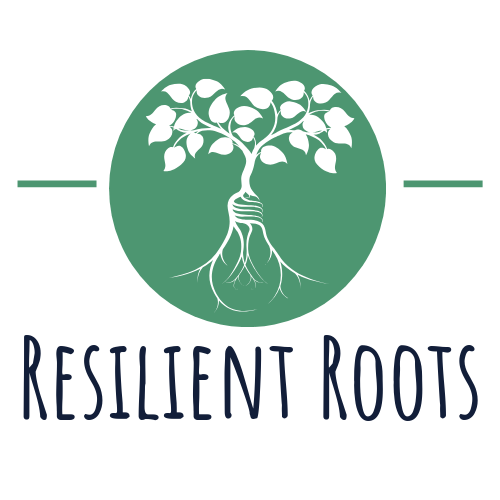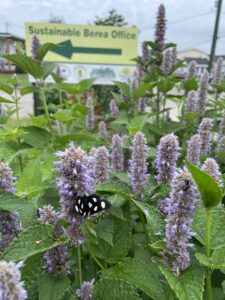Pictured at left: Anise hyssop at the Berea Urban Farm
I taught a harvesting workshop today for the Berea Herb Club and wanted to share some follow ups for the folks who attended the workshop….there was a lot to cover!
Herbs growing for community use in the Berea Urban Farm:
Mint (Lamiaceae) family herbs
- Holy basil/tulsi – Ocimum africanum
-
- link to monograph
- annual but will self seed and can pop up in random places throughout your garden, but its very low key about it and not invasive
2. Anise hyssop – Agastache foeniculum
-
- link to monograph
- Note that this plant is a native perennial, which in my opinion means everyone should have it growing in their garden for pollinators
3. Rose agastache – Agastache pallidiflora subsp. neomexicana
-
- Link with more info (I misspoke in the workshop, I thought this was a cultivar, but turns out its actually a southwestern native).
- I have had patches of this act as both perennials and annuals in our KY soil.
4. Catnip – Nepeta cataria
-
- link to monograph
- This will both act as a perennial in the spot its grow and self seed to other areas. Its an awesome plant for medicine and pollinators, so I let it spread! It is not invasive.
5. Bee balm – Monarda fistulosa
-
- Was not in bloom as of 7/15/23, but should be soon. In the meantime, leaves can be harvested, especially since the plant has downy mildew that gradually works it way up the stem. Take care to harvest leaves without the downy mildew!
- link to monograph
All of these mint family plants make wonderful tea, tinctures, honey extracts, and more! To make a tea, you can make it as strong as you like – to taste. Experiment!
To harvest all of the above plants, give them a good haircut once they start blooming and it will encourage them to bloom more. You can use both leaves and flowers.
Aster (Asteraceae) family plants
- Chamomile – Matricaria recutita
-
- flowers must be harvested regularly in order for the plant to keep making more flowers
- It will self-seed and often grows best when allowed to do this
- Link to monograph
-
- Feverfew – Tanacetum parthenium
-
- Link to monograph and research summary
- Also makes a nice cut flower
- Flowers and leaves are used, but most of the research has been done using the leaf
- This one is bitter and better to eat fresh or tincture vs. use in tea
Marshmallow (Malvaceae) family plants
1. Marshmallow – Althea officinalis
-
- link to monograph
- We are harvesting the leaf right now; this fall we can harvest the root
- The leaf has a neutral taste, but provides an important nutritive and moistening quality, so its great to blend with almost any other herb in tea
2. Roselle hybiscus – Hibiscus sabdariffa
-
- link to monograph
- This one hasn’t started blooming yet, but when it does, we will need to harvest the calyces regularly!
Drying herbs
Dry herbs with temperature and humidity in mind – we are trying to remove the water content from the herbs as quickly as possible, while preserving the medicinal components
-
- Herbs can be dried in a room with a dehumidifier to help remove moisture
-
- Ideal drying temp for most herbs is between 95-105 degrees
-
- Especially aromatic herbs, take care to not dry with too much heat – it will evaporate the aromatic constituents where most of the medicine lies
- Sometimes dehydrators are too hot, but you may be able to use a dimmer plug to reduce the heat
-
- Ideal drying temp for most herbs is between 95-105 degrees
This mesh herb drying rack is the best item I have found to dry a larger quantity of herbs in a smaller space.
Drying in paper bags, especially herbs with tiny flowers (like the Rose Agastache) also works well – just remember to shake the bag regularly to move the herbs around and make sure they have enough room for airflow

